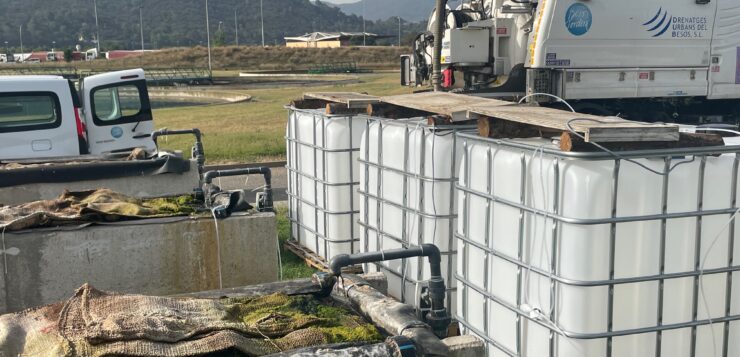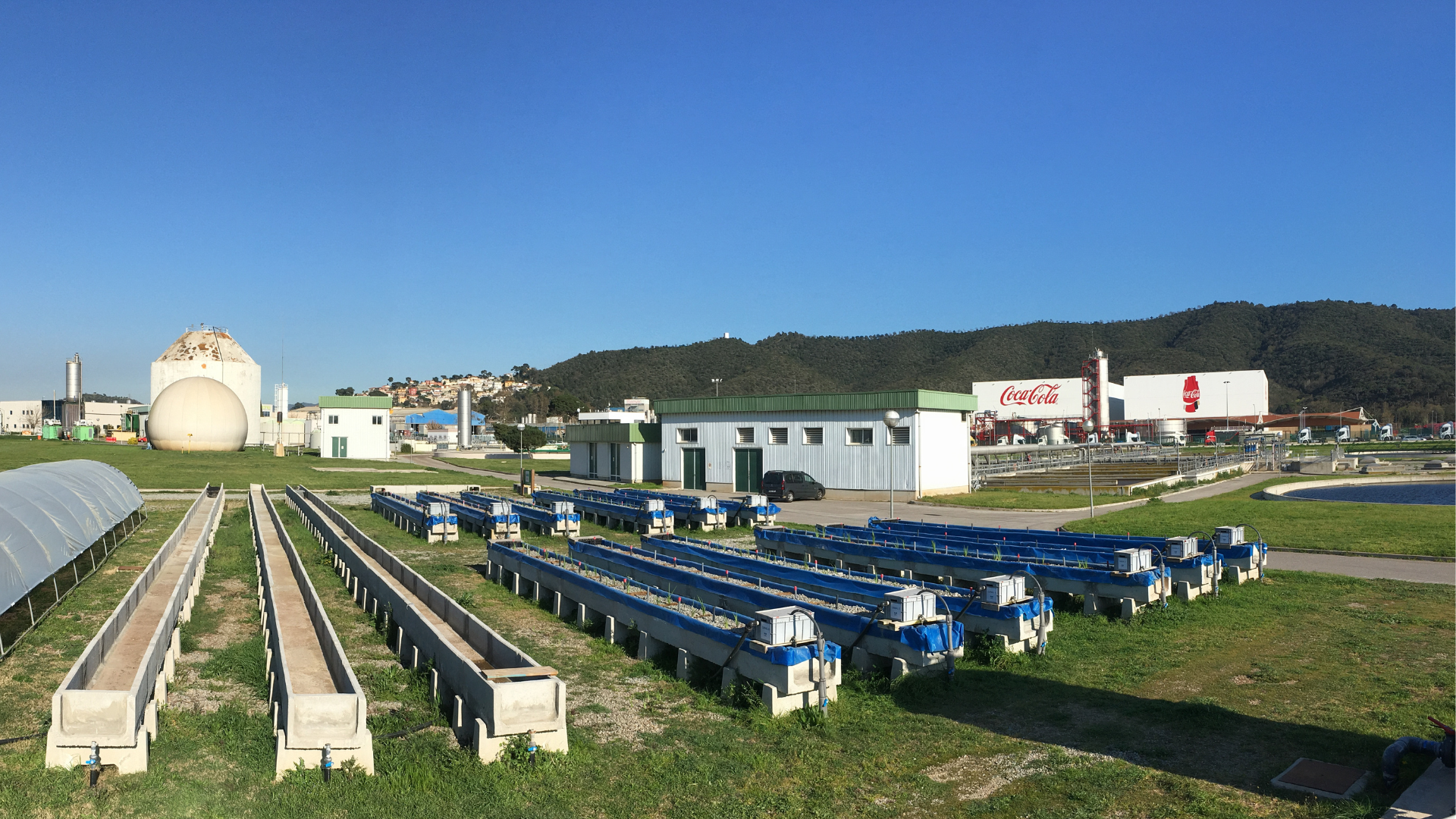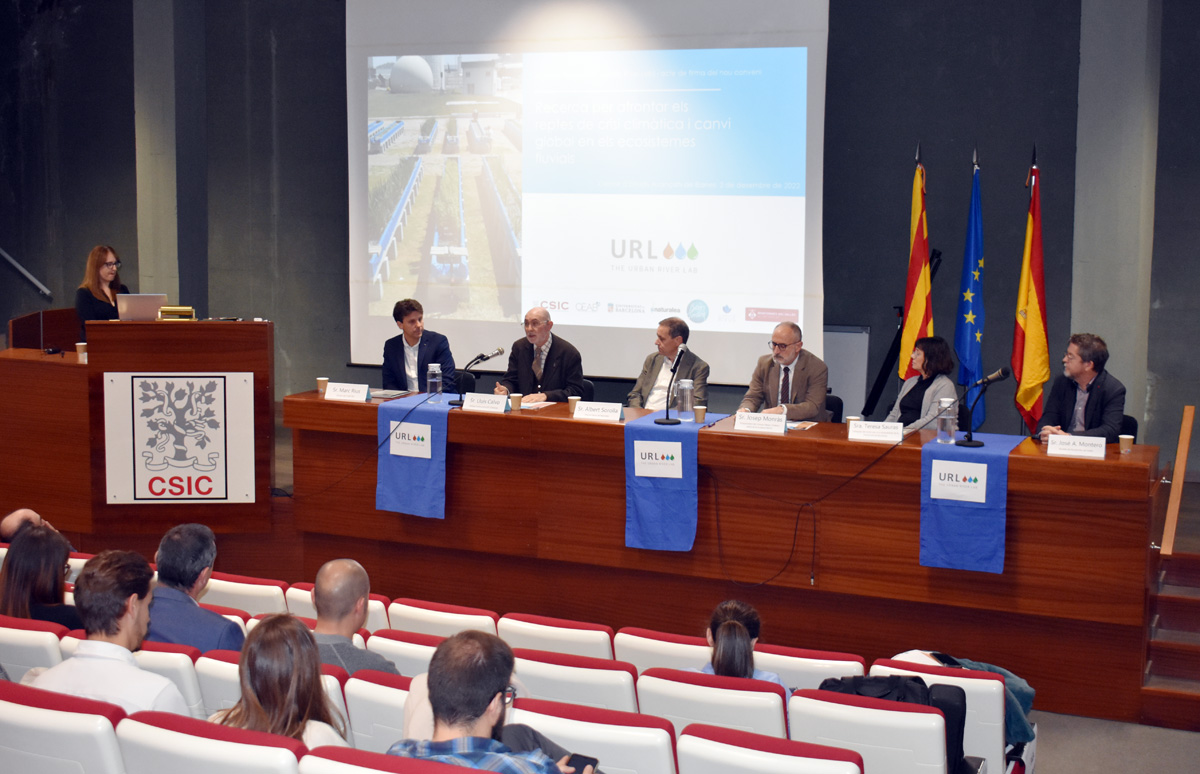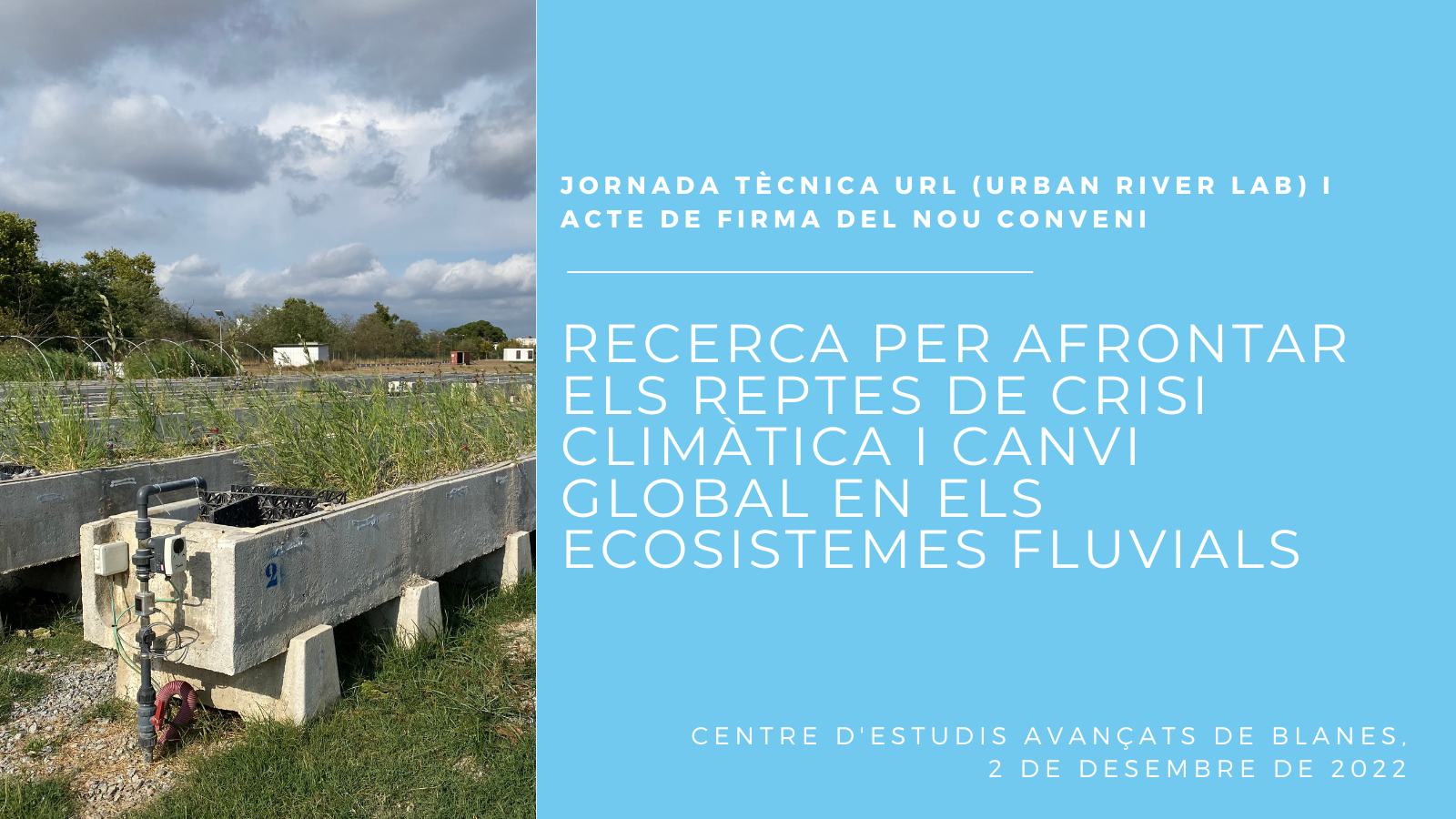Research conducted by the Urban River Lab team has revealed a new natural, zero-kilometer solution for treating wastewater from isolated houses or small urban areas.
Wastewater treatment aims to remove pollutants from water after it has been used for human activities. This work is carried out at wastewater treatment plants, to which municipalities are connected. However, there are small isolated population centers that are not linked to any sanitation system and discharge untreated wastewater into streams and creeks. These contributions represent a small percentage of the total, but they become particularly relevant in drought episodes like the one we are experiencing, when virtually 100% of the water flowing through urban rivers is wastewater, already used and altered.
The research team has been looking for low-cost, low-impact solutions that can be used to treat wastewater generated in these isolated areas, thus reducing negative consequences on receiving rivers. They have sought alternatives to known methods, such as gravel filters, which, while effective, entail a high economic and environmental cost since they must be extracted and transported with heavy machinery over long distances, generating a significant carbon footprint.
The successfully tested solution has been the combination of sacks made of natural fibers (jute and coconut sacks used for storing coffee and later becoming waste from the food industry) and vegetable residues (from branch pruning and leaf collection). These materials were chosen for their natural origin, because they are available everywhere and because they give a new life to waste.
Miquel Ribot, technical manager of the Urban River Lab (URL), explains that “Wastewater treatment using these materials has been tested for six months at the URL, the outdoor laboratory located within the Montornès del Vallès wastewater treatment plant compound. We have evaluated the capacity of sacks and vegetable residues to retain contaminants, both separately and combined. We have also added aquatic plants. All this has been done using artificial channels: placing the fabric and vegetation and filling them with untreated wastewater. We have tested it under different experimental conditions.”
The experimentation has led to the conclusion that sacks and pruning residues promote the growth of microorganisms capable of retaining and eliminating contaminants, such as ammonia and phosphate, making them good materials for designing natural purification systems. It has also been observed that the most effective way to use them is in combination. Additionally, the research has shown that the best purification results are achieved when, in addition to both materials, aquatic plants are introduced into the channels, as these promote the ideal conditions for microorganisms to proliferate.
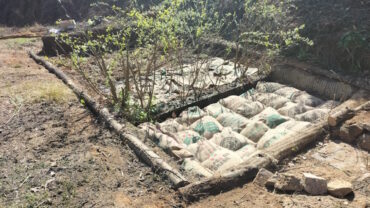 The research team emphasizes the importance of applying these treatments with a good understanding of their dynamics and making proper management over time to maintain their effectiveness. To continue advancing in this line of research, a purification area has already been set up and put into operation using the studied materials.
The research team emphasizes the importance of applying these treatments with a good understanding of their dynamics and making proper management over time to maintain their effectiveness. To continue advancing in this line of research, a purification area has already been set up and put into operation using the studied materials.
Albert Sorolla, technical director of Naturalea, the company that has implemented this natural solution, details: “We are testing the system at the Buxaus farmhouse in Montseny. We are applying everything we have learned at the URL to be able to create natural purifiers with reused and zero-kilometer materials. The initial data is promising and may allow us to manage domestic wastewater without having to transport gravel and stones, thus reducing cost and CO2 footprint.”
The technique, defined as economical, sustainable, and easy to maintain, is proposed as a solution for small wastewater flows, such as those from small population centers or isolated houses, or as a complementary method for standard purification systems.
This research has been developed by the Urban River Lab team, composed of professionals from the Blanes Center for Advanced Studies (CEAB-CSIC), Naturalea Conservació, the University of Barcelona, and the Besòs-Tordera Consortium.


